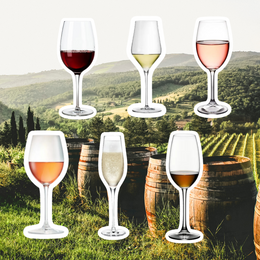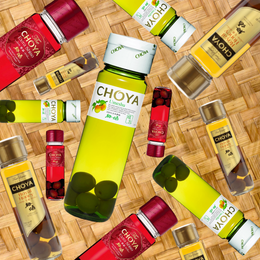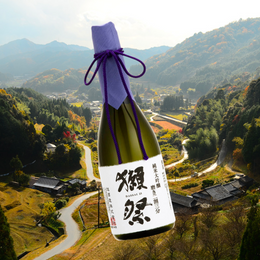Distillery Visit: Kanosuke Distillery 嘉之助蒸溜所 (+ Komasa Jyozo/Hioki Distillery 小正醸造 日置蒸溜蔵)
I was soaking in the scenery of Hioki as the taxi cruised up the mountainous roads, reflecting on the events that transpired to this moment. After about a month of planning, deciding on an itinerary in Kyushu days before my departure, and traveling almost the entire length of Kyushu itself the past few days, Kanosuke Distillery was going to be my first ever whisky distillery visit. My taxi driver engaged with some small talk with me, perhaps because he could sense the jitters from my seat, equal parts excitement and nervousness.

Mountain scenery
I was so stuck in my headspace that before I could realise it, the 20-minute drive was over, and the oddly familiar entrance of the distillery came to view. The white wall. The chic “Kanosuke” font. The barrel with the swan neck scorched into it. “Oh my God. I’m actually here” was the first thing I texted to my fellow 88 Bamboo colleagues the moment I clamoured out of the taxi. Here I was, at the Kanosuke Distillery.

Not even a joke, I was a bit light headed when I got off the taxi.
A quick recap of the distillery’s history: Kanosuke Distillery was established in 2017 by 4th generation owner of Komasa Jyozo, Yoshitsugu Komasa. The forward-thinking shochu maker wanted to introduce shochu to the world, but despite making phenomenal shochu over the decades, shochu was still relatively unknown to most outside of Japan. When the suggestion came to branch into whisky, Yoshitsugu Komasa learnt the art of whisky making in Scotland and USA. Kanosuke released their first whisky in 2021, and the world was caught by storm from how tasty the liquid was.
I highly recommend reading our deep dive on Kanosuke Distillery first!
Kanosuke Distillery 嘉之助蒸溜所

Now, let’s get into my experience at Kanosuke Distillery (with a brief Komasa Jyozo bonus visit!)
Pulling up on the front entrance, you’ll see the distillery’s visitor centre. I highly recommend taking photos here at this wall to proof that you’ve came to the distillery. Much green surrounds the distillery, mostly being local farms. You’ll also see some greyed buildings off at the east of the distillery – more on that later.

Beside the steel silos, you’ll see a few roofed buildings, towards the east of the entrance.
Visitor Centre


Tatsuya Ishihara was the English Tour guide for the day, and he led me through the tour.
History Gallery

For starters, we went into the history of Komasa Jyozo. Komasa Jyozo produced sake at first, making premium rice sake (known as omiki お神酒) as offering to the gods at the local shrine. Over the years, Komasa changed to offering shochu instead, and this century-long tradition is still in practice today.
Now, Kanosuke Komasa, the 2nd generation heir of Komasa Jyozo, was quite the pioneer himself. He made Japan’s first long barrel aged rice shochu "Mellowed Kozuru", made from rice. He got the idea from observing foreign liquor production and how they introduced more flavour to spirits using barrels. With Mellowed Kozuru cementing itself as one of Japan’s legendary shochus, the original 1957 bottle is now proudly on display.

The legendary bottle.
Kanosuke Komasa envisioned a “shochu Disneyland” of sorts – he wanted to build warehouses, playgrounds, and a place where any visitor can visit the distillery. Remember how I mentioned about those three buildings earlier east of the distillery? Those are marked here on the map.

The vision Kanosuke Komasa had. The roofed buildings on the extreme right are now warehouses that stores barrels of the good stuff.

The roofed buildings I mentioned earlier tally against those on the map.
Mashing Tuns, Washbacks and Stills
Moving on to the next part of the distillery, I was introduced to the mash tun and wash back. Here, Kanosuke uses not only the malt from major country such as Scotland and UK, but also a mix of imported and local barley, both contributing to different flavours in the final distillate. Usually, it’s a 10:1 ratio of Scottish malt and Japanese malt. The mashing tun is in action, where Kanosuke takes great care in getting a clear wort for a fruitier, fresher tasting whisky at the end.

Malt + Mashing Tun. The special malt refers to Japan-grown malt, typically mixed in a 1:10 ratio with the base malt.

Over here are the washbacks – half “buried” in the floor. Remember that the folks behind Kanosuke are shochu makers first and foremost – and much of the design is similar to how a shochu distillery would look like. Instead of burying clay pots into the ground, over here it’s mash tuns. Kanosuke uses distiller’s yeast and ale yeast, and after the first bit of fermentation happens, lactic acid bacteria also starts acting, releasing fruitier and more sour flavours into the wort.

Washbacks
Then, we get to see the three copper stills. Each of the copper stills are built differently – one which allow for heavier, oilier compounds to be distilled out with the wider neck and 80 degree lyne arm, and the other where the neck is tapered and the lyne arm at 100 degrees. The three stills give Kanosuke much more options – producing distillates of different profiles and flavours.

The three stills, side by side each other.

From this POV you can see the different lyne arm angles.

And lucky me! I saw fresh heads being produced, with a member of staff taking samples.
After seeing the stills, I was guided to the warehouse for the casks. There are a few warehouses at Kanosuke Distillery like the ones mentioned earlier, with this one being the closest to the stills. We have the Cask No. 1, No. 2, No. 3, and an ex- Mellowed Kozuru cask.

The fabled Casks No. 1, No. 2 and No. 3

An ex-Mellowed Kozuru cask
For context, the famous Mellowed Kozuru, a rice shochu is aged in medium charred American White Oak Virgin casks. After the barrel has been spent, it is sent to the cooper again for a re-char. This results in the “alligator char” on the inner side of the barrel. At the cross section, you could see that there’s this fine layer of stained wood – that’s the shochu that has penetrated deep into the wood, and will give the distillate it’s signature taste.

Alligator char...

... and that fine layer within the Mellowed Kozuru – aged barrel.
Now here comes the most anticipated part of the visit – the tasting in the Mellow Bar!
Mellow Bar

I was greeted by the amazing scenery of the East China Sea, and believe me – my photos can’t do justice to it. The walls of the tasting room were a cream-yellow that reflects the beach sands. Ishihara really set the ambience of the tasting room with a vinyl player playing John Coltrane’s Blue Train. It couldn’t get more classy and mellow then that.

No clocks, just live in the moment.
While most distilleries typically have a set line-up of spirits for a tasting, such as their core range, Kanosuke does not do that. Instead, the menu depends on the season and what’s in production. Today’s menu was a new make that used peated malt (a rarity given that peated malt makes up only 15% of total production), and ex-Mellowed Kozuru cask aged of said peated malt. Then, the Kanosuke Single Malt. The peated whisky is slated to be released in June this year – so keep your eyes on that one!

My tasting flight with the menu that day – and the harsh sun made this picture oddly cinematic.
Let’s move on to the tasting reviews.
Kanosuke Single Malt 48%

Now, the constant if you were to do a tasting at the Mellow Bar would be the core expression Kanosuke Single Malt.
Nose: Sour orange and lemon comes through. Freshly squeezed lemonade, with a touch of sea breeze. There’s a little bit of barely ripened Cavendish bananas as well, alongside ripened tomatoes.
Taste: There’s quite a prominent orange rind flavour, alongside boiled seaweed. A rather interesting grassy-ness as well, that sits somewhere between grass jelly and unsweetened green tea. There’s also that note of maple flavours and brown butter as well.

Finish: Toast comes to mind – those crunchy brown bits from a well-toasted piece of sliced bread. There is a bit of banana candy as well on the finish.
My Rating |
🌅A vibrant, yet mellow whisky that reminds me of dawn break. There’s interesting flavours that stir the palate and olfactory senses, but enough familiar territory that it doesn’t’ feel wholly alien either. Kind of like the anticipation for a new day! |
New Make Peated

This is where the seasonality of Kanosuke’s spirits come in. I just so happen to catch their experiments on peated whisky – which is slated to be ready by July. Keep your eyes open on that one, peatheads!
Nose: The peat isn’t as iodine and phenolic – but more towards the grassy spectrum. I get hay, grass, and a bit of burnt leaves. Peeling back the peat layer, I get some freshly mowed grass, green aromas. It reminds me a bit of vegetable juice.
Taste: Quite sweet, like overripened cherry tomatoes. The peatiness reminds me of dried herbs, dried rosemary in particular.

Finish: There’s a deeper, malt candy that arises from the initial taste. There’s also a hint of that slightly roasted cereal.
My Rating |
🫑♨️I think of barbequed vegetables when I taste this new make – like grilled peppers, eggplants and corn. The vegetable flavours are certainly interesting to me, giving it a freshness uncommon to other new makes I’ve had. |
Re-charred Kozuru Cask Peated

Nose: A mix between milk chocolate, dark chocolate and malt drinks. The peat smells a lot muddier and less oceanic or phenolic, when mixed with the chocolatey smells. This really reminds me of a chocolate fondue.
Taste: The milk chocolate comes through at the initial taste. For a moment, I had a pressed, dried thyme flavour come through – that herbaceous sweetness. However, the chocolate notes take over and I get chocolate-coated raisins or dates as the primary flavour.

Finish: My mouth is left with that waxy feeling you get from eating compound chocolate. There is a slight almond nuttiness and date sweetness that lingers as well alongside the chocolate. Strangely enough, from the tasting to the finish, I didn’t get much peat at all.
My Rating |
🫕🍫This feels somewhat nostalgic, and I can’t exactly explain why. Maybe because it evokes memories of my family treating me chocolate fondue at the very once in a blue moon situation, and the aroma, taste and lingering finish of hot chocolate really stuck to me on this one |
Now that we’ve completed the tasting, let’s move on to a sneak-peek of Komasa Jyozo!
Hioki Distillery/Komasa Jyozo

I just so happened to be alone on the tours that day. I tested my luck and asked if I could juuust take a quick peek at Komasa Jyozo’s Hioki Distillery, and with extreme graciousness the folks at Kanosuke Distillery heeded my request, even though it was close to their closing hours. Do note that this is not the norm, but I reckon it’ll be good to show you some of Hioki Distillery!

I was taken to the front of house shop of Komasa Jyozo, where you are able to get your hands on Kagoshima-only Komasa shochus. Moving on from the store front, I was brought into the distilleries themselves. You’ll see that there are huge, towering thanks of freshly made distillates. Unlike Kanosuke Distillery, that produces only malt whisky, Hioki Distillery produces shochu, the Komasa gins, liquors and grain whisky.

I was shown the giant hopper, where 50 tonnes of sweet potatoes would arrive in a day at peak season (from August to December). They go down the hopper, which would then be sorted.
Afterwards, here is where the sweet potatoes would be sliced, steamed, and then fermented. The neighbouring warehouses (which weren’t open at the time) were housing equipment for barley and rice shochu distillation equipment.

And… that concludes our tour with Kanosuke Distillery (+ a sneak peek of Hioki Distillery)! For those itching to visit the distillery, the distance from Kagoshima city can be a little daunting. Here’s my personal experience and tips that I would like to share, though take it with a grain of salt. When in doubt, always email the Kanosuke staff first.
- Currently, the Kanosuke Distillery visits are by reservation only. Plan your trip and request for tour bookings ahead of time – and as early as possible. Email the Kanosuke team a range of dates if you are not sure of your exact time of visit.
- As recommended by the Kanosuke website, I went to the Ijuin station (JR Line) and got a taxi from there. Once you make a right from the exit, there should be a taxi driver or two at the station roundabout. I did not take a taxi from Kagoshima station, so I am unable to share much about it. Preparing roughly 6,000 yen in cash might be a good idea as well for the taxi fare (mine totalled up to less than that).

- If you have a timing to meet, take note of the train schedule back and forth Ijuin station. According to the taxi driver who drove me to Kanosuke, most people spend 2 hours at the distillery. Account for about 45 minutes of buffer time when travelling from the distillery back to the station. The trains along the JR line between Sendai and Kagoshima are not too frequent either.
- If possible, you could try asking for the taxi driver’s phone number. From my personal experience, my taxi driver gave his phone number to me, making it easy to return back to Ijuin station after I was done with my tour.
Regardless, I’m sure the hospitable team at Kanosuke will render help whenever needed – feel free to approach them and tell them 88Bamboo sent you!

@vernoncelli





